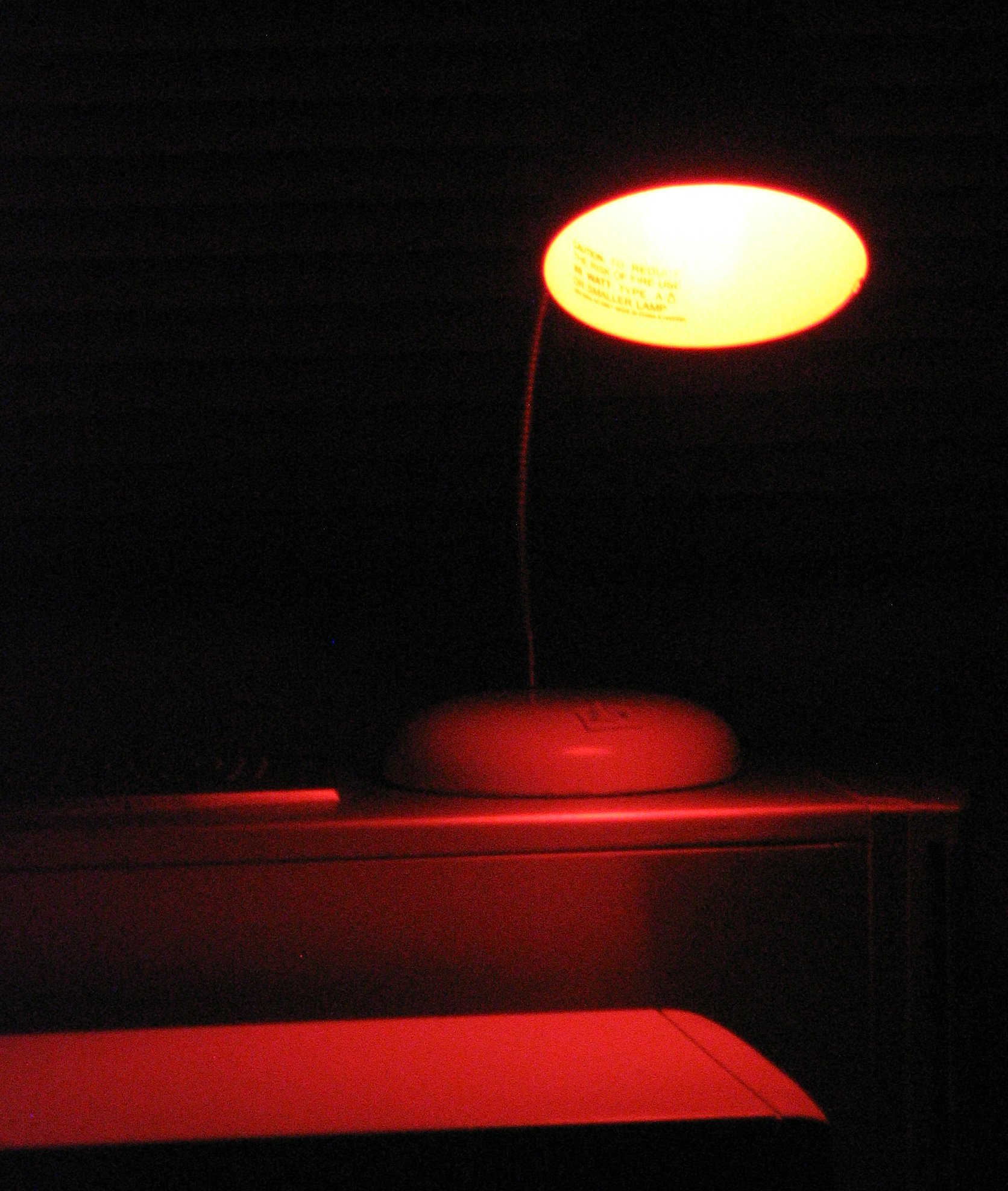Safelight on:
[Wikipedia]
[Google]
[Amazon]

 A safelight is a
A safelight is a

 A safelight is a
A safelight is a light source
Light, visible light, or visible radiation is electromagnetic radiation that can be visual perception, perceived by the human eye. Visible light spans the visible spectrum and is usually defined as having wavelengths in the range of 400– ...
suitable for use in a photographic darkroom
A darkroom is used to process photographic film, make Photographic printing, prints and carry out other associated tasks. It is a room that can be made completely dark to allow the processing of light-sensitive photographic materials, including ...
. It provides illumination only from parts of the visible spectrum
The visible spectrum is the spectral band, band of the electromagnetic spectrum that is visual perception, visible to the human eye. Electromagnetic radiation in this range of wavelengths is called ''visible light'' (or simply light).
The optica ...
to which the photographic material in use is nearly, or completely insensitive.
Design
A safelight usually consists of an ordinary light bulb in a housing closed off by a coloured filter, but sometimes a special light bulb or fluorescent tube with suitable filter material or phosphor (in fluorescent tubes) coated directly on the glass is used in an ordinary fixture. More recently LEDs, which have a relatively narrow spectral bandwidth, are becoming more popular. Differently sensitised materials require different safelights. In traditionalblack-and-white
Black-and-white (B&W or B/W) images combine black and white to produce a range of achromatic brightnesses of grey. It is also known as greyscale in technical settings.
Media
The history of various visual media began with black and white, ...
photographic printing, photographic paper
Photographic paper is a coated paper, paper coated with a light-sensitive chemical, used for making photographic prints. When photographic paper is exposed to light, it captures a latent image that is then Photographic developer, developed to form ...
s normally are handled under an amber or red safelight, as such papers typically are sensitive only to blue and green light. Orthochromatic
In chemistry, orthochromasia is the property of a dye or stain to not change color on binding to a target, as opposed to ''metachromatic'' stains, which do change color. The word is derived from the Greek '' orthos'' (correct, upright), and chr ...
papers and films are also sensitive to yellow light and must be used only with a deep red safelight, not with an amber one. Panchromatic
A panchromatic emulsion is a type of photographic emulsion that is sensitive to all wavelengths of visible light, and produces a monochrome photograph—typically black and white. Most modern commercially available film is panchromatic, and the t ...
films and papers, nominally sensitive to the entire spectrum, sometimes have a region of minimum in their range of sensitivity that allows the careful use of safelight confined to that part of the spectrum. For example, Kodak
The Eastman Kodak Company, referred to simply as Kodak (), is an American public company that produces various products related to its historic basis in film photography. The company is headquartered in Rochester, New York, and is incorporated i ...
Panalure panchromatic paper is tolerant of limited exposure to light filtered through a Kodak 13 Safelight Filter. Other panchromatic materials must be handled only in total darkness.
Many photosensitive materials used in technical and industrial applications, such as photoresist
A photoresist (also known simply as a resist) is a light-sensitive material used in several processes, such as photolithography and photoengraving, to form a patterned coating on a surface. This process is crucial in the electronics industry.
T ...
, are sensitive only to blue, violet, and ultraviolet light and may be handled under a brighter yellow safelight. Low-pressure sodium vapour lamps sometimes are used in larger industrial darkrooms. They emit nearly monochromatic light at 589 nm (yellow), to which the materials are insensitive; as a result they can be extremely bright while still "safe".
The word ''safe'' in ''safelight'' is relative, as in most cases, a sensitised material eventually will be affected by its safelight if exposed to it for an extended length of time.
See also
*Photographic processing
Photographic processing or photographic development is the chemical means by which photographic film or paper is treated after photographic exposure to produce a negative or positive image. Photographic processing transforms the latent image i ...
* Purkinje effect
The Purkinje effect or Purkinje phenomenon (; sometimes called the Purkinje shift, often pronounced ) is the tendency for the peak luminance sensitivity of the eye to shift toward the blue end of the color spectrum at low illumination (lighting), ...
References
Photography equipment Types of lamp {{photography-stub